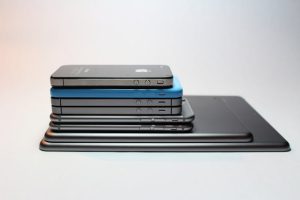The Evolution of the iPhone: How Apple Redefined the Smartphone
Since its debut in 2007, the iPhone has transformed from a simple touchscreen phone into one of the most powerful and iconic devices on the planet. It’s not just a smartphone—it’s a cultural symbol, a creative tool, and a technological benchmark that continues to push boundaries year after year.

A Revolution in 2007
When Steve Jobs introduced the first iPhone, he famously said it was “an iPod, a phone, and an Internet communicator.” At the time, no one could imagine that a single device would replace digital cameras, MP3 players, GPS systems, and even computers for many daily tasks.



The first iPhone’s sleek design, multitouch display, and intuitive interface set a new standard—and competitors have been chasing Apple’s innovation ever since.
⚙️ From Innovation to Perfection
Each generation of iPhone introduced groundbreaking features:
iPhone 4 (2010): The first Retina Display and front-facing camera for FaceTime.
iPhone 5s (2013): Touch ID fingerprint sensor.
iPhone X (2017): Face ID and edge-to-edge OLED display.
iPhone 14 (2022): Crash Detection and Dynamic Island.
iPhone 15 Pro (2023): Titanium design and the powerful A17 Pro chip, enabling console-quality gaming.
Every release continues Apple’s mission: to merge powerful hardware with seamless software in a way that simply works.
A Camera in Your Pocket
The iPhone’s camera system has become one of its biggest selling points. From cinematic video modes to professional-grade photography tools, Apple has made it possible for anyone to capture stunning images without expensive gear. The computational photography powered by the A-series chips allows users to take crisp, detailed photos even in low light.
Performance and Ecosystem
Beyond the hardware, the iPhone shines because of the Apple ecosystem. iCloud, iMessage, FaceTime, Apple Watch, and Mac integration make switching between devices effortless. The A-series processors also keep iPhones running smoothly for years, making them one of the most future-proof smartphones available.
Sustainability and Future
Apple has taken steps toward sustainability with recycled materials, longer software support, and reduced packaging. Rumors suggest that future iPhones will further embrace AI, improved battery technology, and even deeper integration with Apple Vision Pro.
Final Thoughts
The iPhone is more than a product—it’s a lifestyle. Whether you use it for creativity, productivity, or connection, it continues to shape how we live, communicate, and see the world. As Apple keeps innovating, one thing is certain: the next iPhone will always aim to surprise us.
